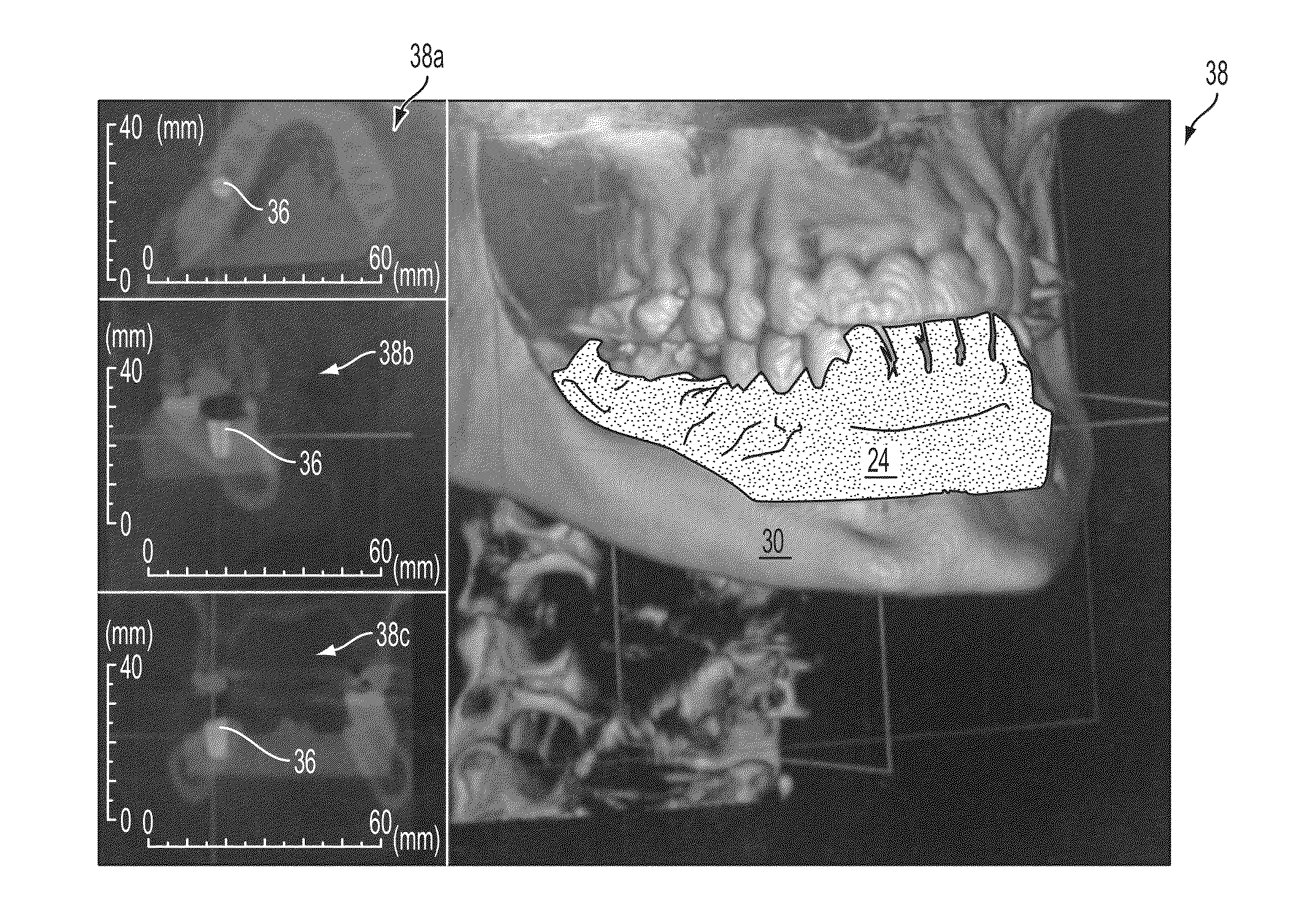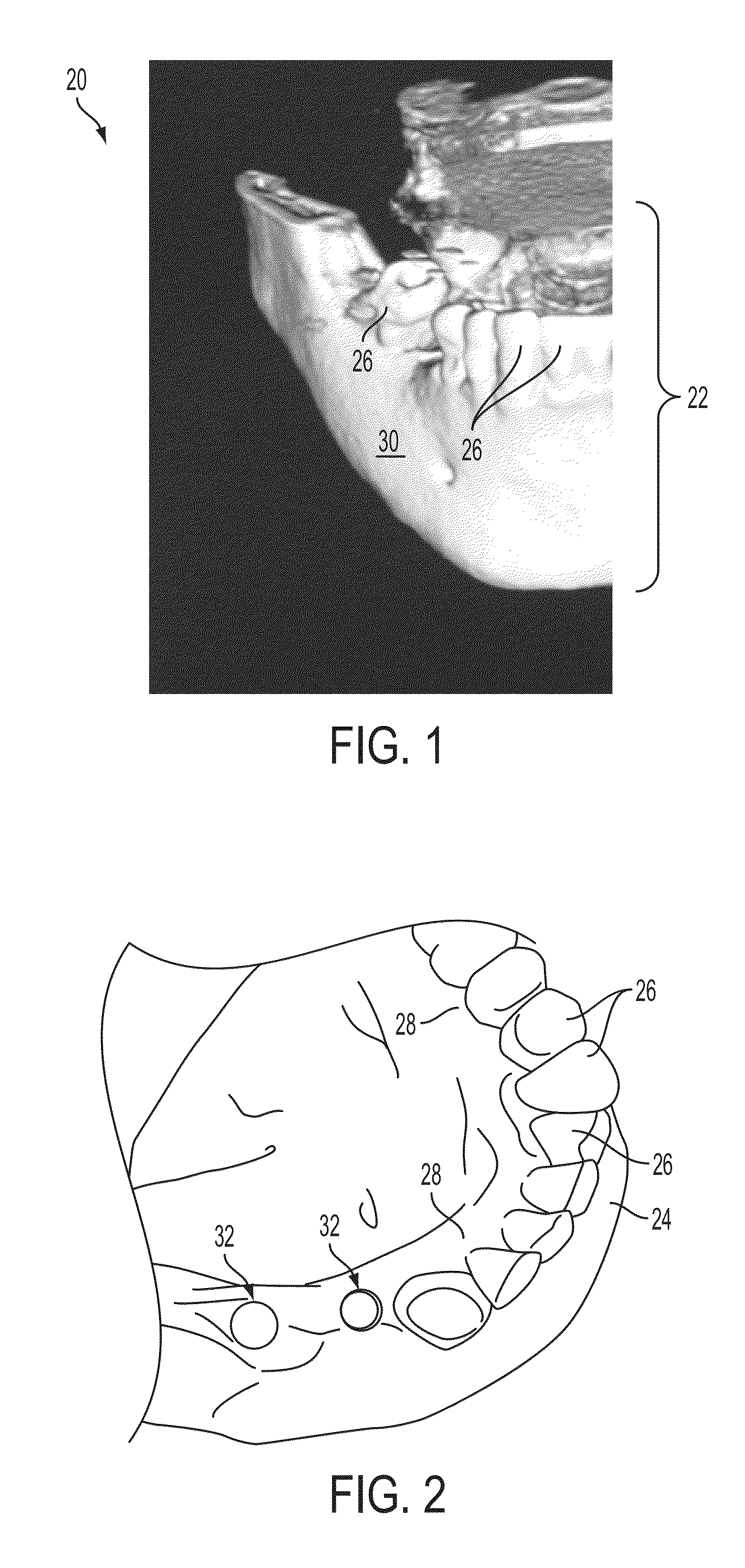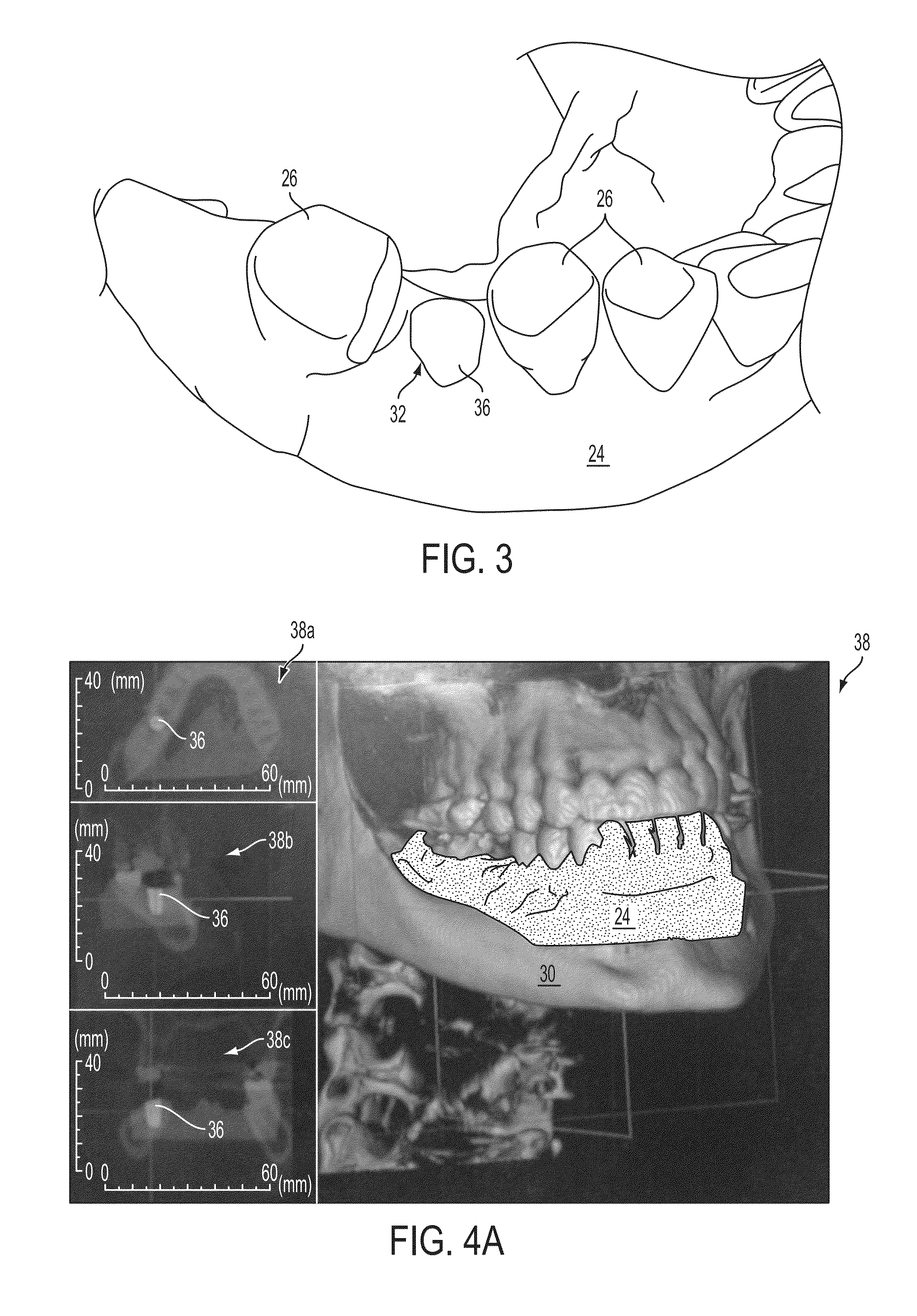Image-overlay medical evaluation devices and techniques
a medical evaluation device and image overlay technology, applied in the field of medical imaging systems, can solve the problems of inability to accurately and predict the accuracy of bench-top surgical guides, prohibitively expensive and time-consuming to use non-ionizing radiation, and repeated doses of medical patients and medical personnel, and achieves the effects of low cost, short time, and low cos
- Summary
- Abstract
- Description
- Claims
- Application Information
AI Technical Summary
Benefits of technology
Problems solved by technology
Method used
Image
Examples
Embodiment Construction
[0064]The systems and image-overlay techniques of the present invention include devices and methods used to determine the precise anatomical position of surgical implants or prostheses, as well as osteotomies or other modifications to body tissues. 3-dimensional volumetric rendering software of pre-surgical patient DICOM (Digital Imaging and Communications in Medicine) image files are superimposed with either DICOM images of physical models or optical (such as laser) scans of patient anatomy or models, or negative DICOM images of an impression of the patient's anatomy, to accurately reveal precise anatomical or potential anatomical implant positions. The image-overlay techniques allow a clinician to fabricate, evaluate, and confirm accuracy of a surgical guide using computed tomography (“CT”) scanning, cone beam computed tomography (“CBCT”), laser scanning, or the like, prior to or during placement of a dental implant (or other surgical implant).
[0065]In accordance with current sugg...
PUM
 Login to View More
Login to View More Abstract
Description
Claims
Application Information
 Login to View More
Login to View More - R&D
- Intellectual Property
- Life Sciences
- Materials
- Tech Scout
- Unparalleled Data Quality
- Higher Quality Content
- 60% Fewer Hallucinations
Browse by: Latest US Patents, China's latest patents, Technical Efficacy Thesaurus, Application Domain, Technology Topic, Popular Technical Reports.
© 2025 PatSnap. All rights reserved.Legal|Privacy policy|Modern Slavery Act Transparency Statement|Sitemap|About US| Contact US: help@patsnap.com



